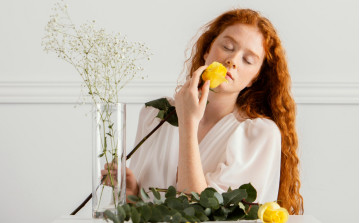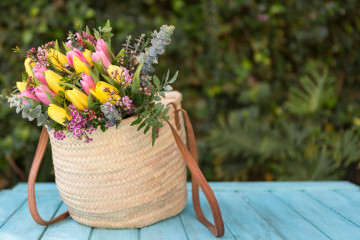History of flowers. Symbolism and meaning of popular species
Since time immemorial, flowers have carried deep symbolism, which deepened over time and grew new shades of meaning as humanity developed.
With the help of flowers, people expressed different feelings and emotions, and also conveyed important messages, including those that no one should know except the recipient and the sender. Flowers were praised by many writers, poets and, of course, artists. To this day, people think about the meaning of fragrant buds of various flowers and try to carefully select the composition of bouquets so that the addressee catches exactly the meaning that the sender wants to convey.
What is the language of flowers?
The language of flowers has its own name: floriography. It is used to express feelings, emotions, mood and even ideas. Even in ancient times, flowers had great significance. In ancient Egypt, the lotus was used in religious ceremonies, while a number of other flowers were also associated with certain deities. Later, flowers began to be used to create various amulets, talismans and talismans in order to protect against evil spirits and as a special gift to the gods.
For the first time they "spoke" in the language of flowers. in the East. Thus, in Turkey, the names of flowers were used as key words in lyrical works. The Sultan's concubines also used the language of flowers, sending and receiving secret messages from their lovers outside the palace. This system formed the basis of the European language of flowers, which became popular already in the 19th century. In the Victorian era, it was used to express feelings in secret, when it was impossible or fearful to speak about them openly.
The popularization of floriography was facilitated by the famous writer Mary Wortley Montague. Traveling with her husband in Turkey, she managed to learn many secrets of the language of flowers from the concubines themselves. She described the system in detail in her book, making it known to many ladies and gentlemen in England, France and many other countries of the world.
The meaning of flowers
Today, the fashion for the symbolism of flowers is gradually dying out, therefore, using the language of flowers, we often run the risk of not being clear or not understanding the meaning of the bouquet sent to us. We currently offer you to dive into the fascinating and mysterious world of floriography and learn about the symbolism of today's most popular flowers:
- Roses. Since ancient times, they have symbolized love and passion in various manifestations. Most often, red roses were used to express deep feelings, and they are still chosen to convey such feelings. Pink or white buds are able to express more tender and awe-inspiring emotions.
- Lily. These flowers are the embodiment of nobility and elegance. Such flowers were given as a compliment to a beautiful lady or to express sympathy. White lilies symbolize purity, majesty and virtue. A gentler alternative would be pink flowers or buds of other shades.
- Chrysanthemums. Such plants carry a symbol of respect. Since ancient times, they also embody longevity and prosperity. That is why such bouquets can be safely served to the elderly.
- Peonies. These airy and lush flowers have symbolized wealth, luck and prosperity since ancient times. They were even used as a symbol of the imperial family in China. In addition, delicate buds mean awe-inspiring love, honor and dignity.
- Hypsophylls. If earlier these flowers were used only as additions to compositions, today they are in demand in monobouquets. The symbolism of flowers is reflected in their appearance. Light and airy, they mean renewal, new beginnings and rebirth. Symbolizing innocence, purity and sincerity, they are perfect as a gift for young and tender people.
- Hydrangea. Plants of this species mean purity, gratitude, modesty and grace. Even in ancient times, flowers were used in wedding bouquets. They are still popular today. In addition, hydrangeas can be presented as an apology or as a sign of friendship to give the warmest emotions.
- Gerbera. Bright petals of these flowers reflect purity, innocence and love of life. That is why such a bouquet can be brought to a children's holiday, presented to parents or presented to colleagues as a sign of gratitude or admiration.
- Tulips. Like many spring flowers, they symbolize renewal and the beginning of a new life. In addition, the tulip conveys the most tender feelings of sympathy, hope and wishes for happiness. In ancient cultures, the flower was a symbol of the ruling family, meant wealth and material prosperity.
- Daisies. Back in the 19th century, such flowers were a symbol of energy capable of coping with adversity. To this day, bright flowers mean joy, happiness, as well as love, a strong family and loyalty.
Choosing bouquets, you can always add additional meaning to your gift. It is enough to dive a little into the magical world of the language of flowers, so that the usual present plays with new colors and gives unforgettable emotions to the recipient!
31-07-2025
Flowers for yourself31-07-2025
What flowers to give to girls30-06-2025
What flowers to give in summer












